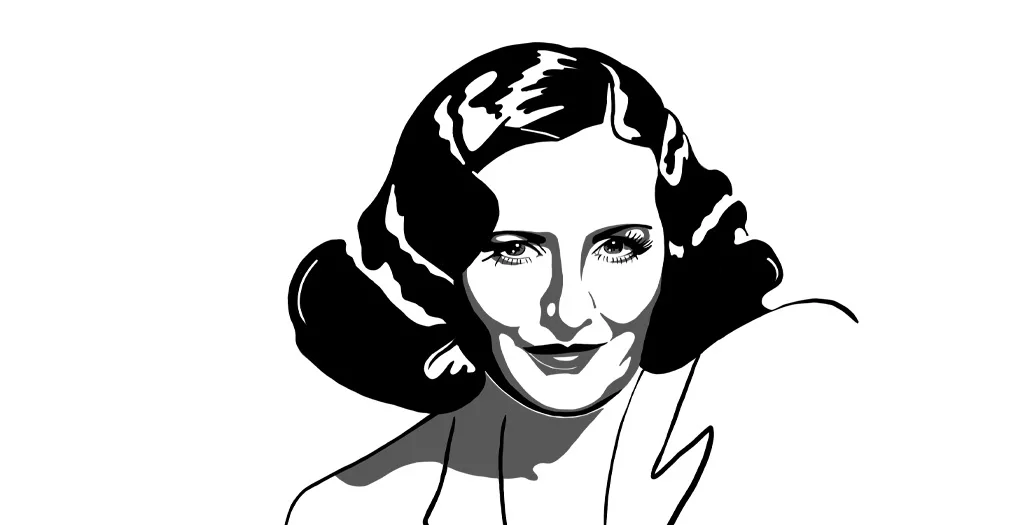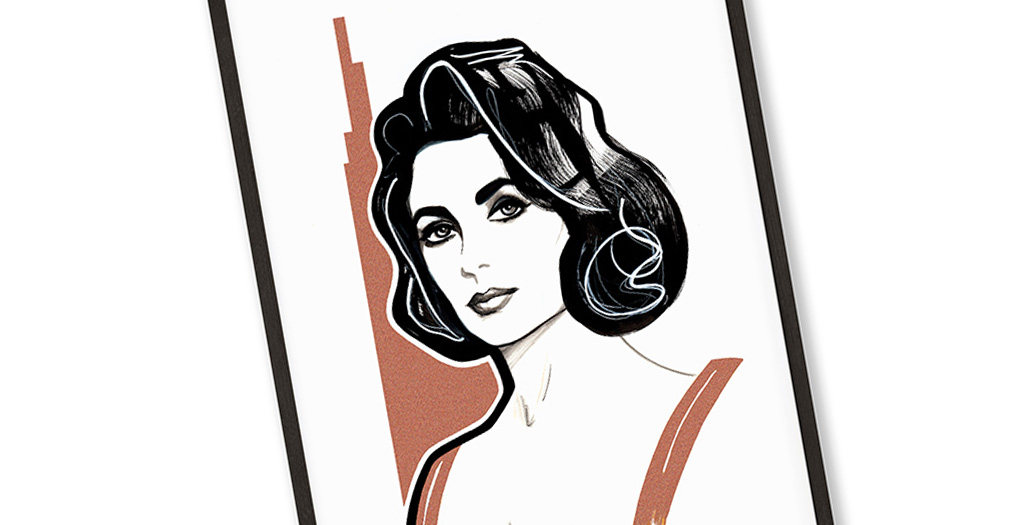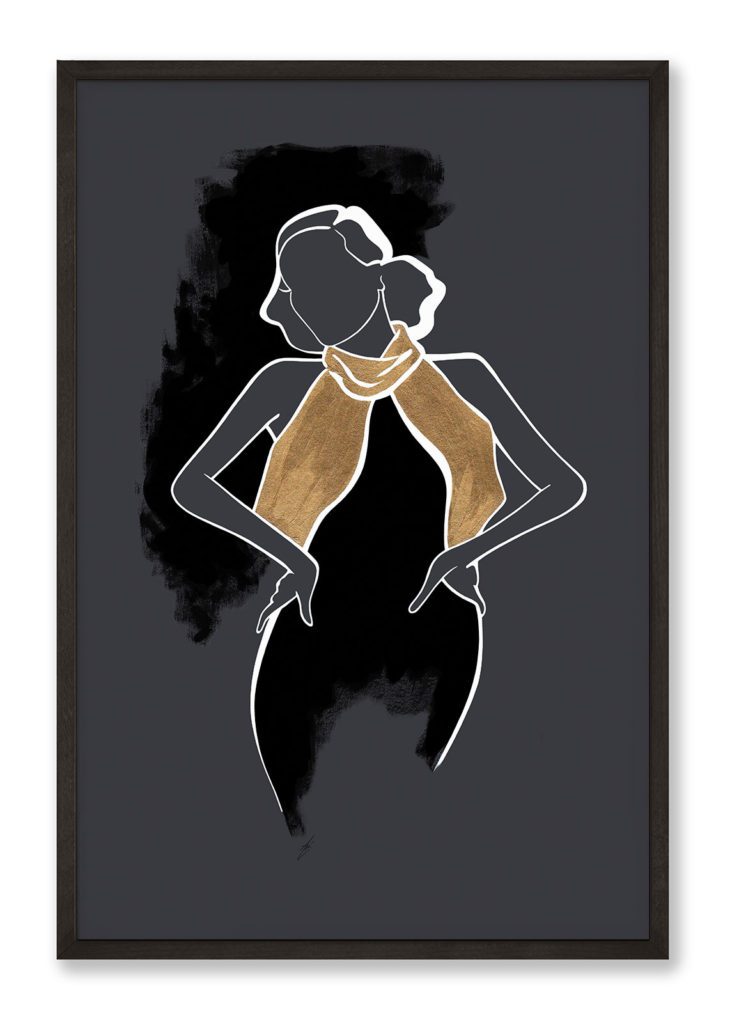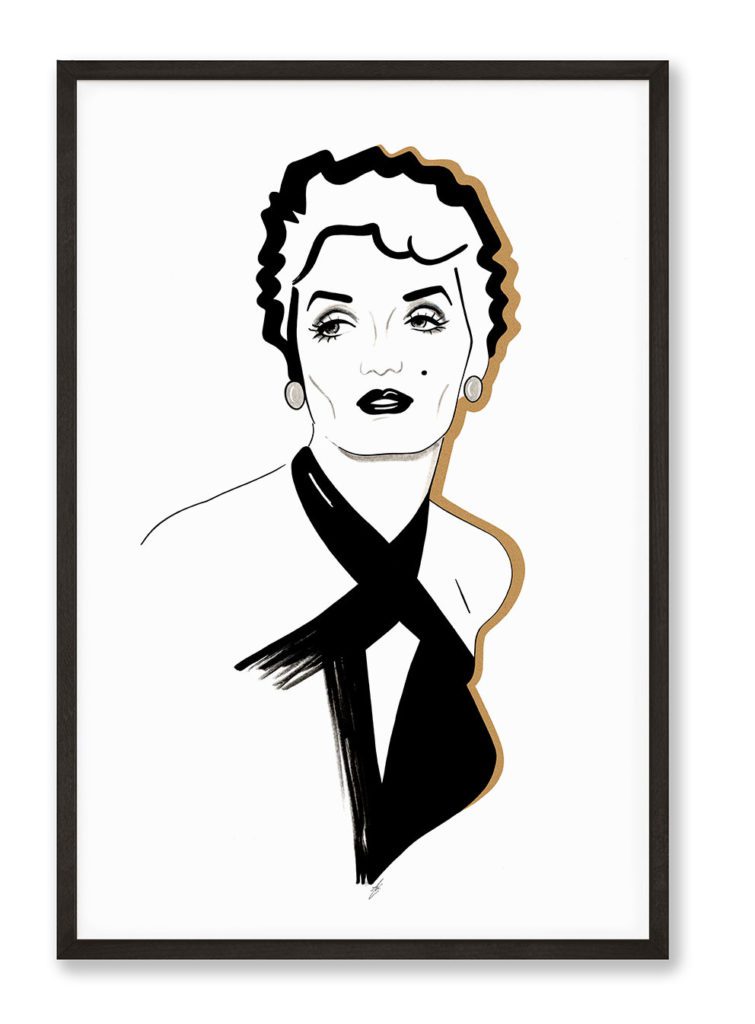Barbara Stanwyck
Strong characters on screen & a kind heart off screen




Hi, I'm Kate!
What I am most passionate about is to inspire you to see that your life is your own and biggest masterpiece.
Barbara Stanwyck was an actress, model and dancer whose career spanned six decades. She was especially known for her strong and realistic screen presence and her natural acting style. She is on the list of the most important screen legends of the American Film Institute.
LISTEN TO THE PODCAST
SUBSCRIBE TO THE PODCAST
Beginnings
Ruby Catherine Stevens was born on July 16 in 1907 in Brooklyn, New York to a working-class family as the youngest of five children with three older sisters and one older brother. When Ruby was four, her mother died from complications of a miscarriage that has likely been caused by a fall from a streetcar when she was pushed by a drunkard. Unfortunately, only two weeks after her funeral the father left for a digging job for the Panama Canal and never returned to his family. Subsequently, Ruby and her brother Malcolm Byron were raised by their oldest sister Laura Mildred. But Mildred had to earn a living as well – and when she got a job as a showgirl, Ruby and Byron were placed with foster parents. Ruby didn’t like it though and ran away often.
When Ruby was nine, she accompanied her sister on a tour and practiced her routines. She also was an avid fan of Pearl White – both these experiences instilled in Ruby the wish to become a performer.
At age 14, she dropped out of school and never attended high school- she never had received good grades anyway. First, she took on a package wrapping job at a department store, then a filing job at the Brooklyn telephone office, a pattern cutter for Vogue magazine, from which she was released due to customer complaints and finally a job as a typist for the Jerome H. Remick Music Company. Although these jobs provided some financial independence, Ruby’s ambitions were still set on show business.
Ziegfeld Follies, Nightclubs and Broadway
From 1922 onwards, Ruby worked as a dancer and chorus girl. First, she auditioned for the Strand Roof, a nightclub over the Strand Theatre in Times Square. Then, she got a job at the Ziegfeld Follies for the 1922 and 1923 seasons at the New Amsterdam Theater and then in the nightclubs of Texas Guinean. Texas Guinean also employed Ruby as a dance instructor at a speakeasy for gays and lesbians.
In 1926, Ruby was introduced to Broadway impresario Willard Mack, who wanted to bring his play „The Noose“ on the stage. One of the characters was a chorus girl and Ruby fit the part perfectly – so Mack cast her. With Ruby’s part getting more gravitas than originally intended, the play became a smashing hit and ran on Broadway for nine months and 197 performances. It was at that time that David Belasco suggested Ruby to change her name to Barbara Stanwack. The name was a combination: The first name taken from the title character in the play „Barbara Frietchie“ and the last name of the actress in the play, Jane Stanwyck.
Stanwyck’s first leading role on Broadway was in the original play „Burlesque“ in 1927. The play and Stanwyck were a great success. As Pat O’Brien would later put it: „The greatest Broadway show I ever saw was a play in the 1920s called ‚Burlesque‘.“
Based on her stage success she was given a screen test by producer Bob Kane for the 1927 movie „Broadway Nights“ – she lost out on the leading role because she couldn’t cry on cue, but was given a minor part. This was Stanwyck’s first film appearance.
Hollywood
In 1929, when Stanwyck was 22 years old, she starred in her first sound pictures, and was subsequently cast by Frank Capra for his film „Ladies of Leisure“. This established a long-standing friendship between these two as well as the start of a series of professional collaborations between them. Other quite successful movies followed – one of them being notorious pre-code movie „Baby Face“ in 1933. As Mark A. Vieira, puts it: „Baby Face was certainly one of the top 10 films that caused the Production to be enforced.“ It’s about a young girl that gets prostituted by her father from the early age of 14 onwards and would later use her sexuality to exploit men financially and get ahead in the world. Creatively, the pre-code era was apparently the best time for Barbara Stanwyck. Mick LaSalle from the San Francisco Chronicle said about her work: „”If you’ve never seen Stanwyck in a pre-Code film, you’ve never seen Stanwyck. (…) Never in her career, (…) was she ever as hard-boiled as she was in the early 1930s. She had a wonderful quality of being both incredibly cool and yet blazingly passionate. Her cynicism was profound, and then, without warning, she would explode into shrieking, sobbing.”
„Stella Dallas“ was another of Barbara Stanwyck’s movie gems – in it she plays a mother who would give up her teenager daughter to allow her to grow up in a better environment to have a shot at a better life. She got an Academy Award nomination as Best Actress for this role.
Her leading character in „The Lady Eve“ opposite Henry Fonda was hailed as „one of the best American comedy performances“ and the movie is considered among the top 100 movies of all time.
„Ball of Fire“ in 1941 opposite Gary Cooper is a funny twist on Snow White and the Seven Dwarfs and receives a stunning 100% on Rotten Tomatoes. The Howard Hawks directed screwball comedy was deemed „culturally, historically and aesthetically significant“ by the US Library of Congress and selected for preservation in its National Film Registry.
Quite another side of Stanwyck is shown in „Double Indemnity“, in which she plays the „most notorious femme fatale“ in a film noir. It was nominated for seven Academy Awards and is also on the list of the top 100 movies of all time.
Her movie „Christmas in Connecticut“ has been a hit for Christmas time ever since its release.
Many other notable films followed – for example the „The Strange Love of Martha Ivers“, „Sorry, Wrong Number“, or „The Other Love“.
In short, Barbara Stanwyck’s success lasted for over 20 years. It was only in the mid-1950s, when she was in her 40s, that her movie career declined and she turned to TV instead.
Television
She would star on several anthology series like Dick Powell’s Zane Grey Theatre as well as guest-starred on several TV series like „The Untouchables“ or „Wagon Train“.
Her first starring role on TV was in „The Big Valley“ and made her one of the most popular actresses on TV. She even won an Emmy for it. She won another Emmy for her role in „The Thorn Birds“. She guest-starred in Dynasty and was part of the main cast of the spin-off series „The Colbys“. But as she was not quite happy with the experience, she would leave after the first season.
Relationships
Rex Cherryman – When Barbara Stanwyck first starred on Broadway in the play „The Noose“, she fell in love with co-star Rex Cherryman. But things turned out quite differently. Cherryman fell ill and was advised to travel to France (via boat). Unfortunately, during the trip he fell ill with septic poisoning and died shortly after arriving in France – where he had been scheduled to meet with Stanwyck.
Frank Fay (Husband #1) – Barbara met Frank Fay during her time on Broadway in „Burlesque“, in which they both starred. At first, they apparently disliked each other, but became closer after Cherryman’s death. They were married in August 1928 and moved to Hollywood soon after. As Stanwyck was unable to have children (probably due to a botched abortion in her teenage years), the couple adopted a ten-month-old boy in 1931, which they named Anthony Dion and nicknamed „Tony“. The marriage got strained in Hollywood – while Stanwyck made the transition to movies successfully, Fay’s career crumbled. Reportedly, he was also physically abusive towards Stanwyck during these years. The movie „A Star is Born“ from 1937 is rumored to be based on their marriage. They divorced after seven years of marriage in 1935. Stanwyck won sole custody of her son and raised him with an authoritarian style. As soon as he became of age, they would hardly ever speak to each other. Richard Corliss, film critic and magazine editor for the Times would write about their relationship the following, he „resembled her in just one respect: both were, effectively, orphans.“
Robert Taylor (Husband #2) – Stanwyck met fellow actor Robert Taylor on the movie set of „His Brother’s Wife“ in 1936. As he was four years her junior and had only signed with MGM a mere 2 years before, Stanwyck showed him the ropes of Hollywood, guided his career and helped him find his way in Hollywood. They lived together for three years before marrying in 1939. Eleven years later, in 1950, they both decided to get a divorce and Barbara would file the papers. The reason for divorce are manyfold – many believe that Taylor had an affair during the marriage, but it was also that Taylor wanted to create a life beyond Hollywood, away from the entertainment glitz, but Stanwyck wanted to stay. Nevertheless, they stayed close friends and Stanwyck would always claim that Taylor had been the love of her life. When he died in 1969, Stanwyck grieved and took an extended time off work.
Robert Wagner – When Barbara Stanwyck was 45 years old, she had an affair with then 22-year-old actor Robert Wagner, the later husband of Natalie Wood.
Farley Granger – Stanwyck also had a one-night stand with Farley Granger, about which he wrote in his autobiography.
Friendships
Barbara Stanwyck was known to be very kind as a person – although on screen she would often depict strong and complex characters. She would know the whole crew of a movie set by name as well as often the names of their wives and children. As long-time friend Frank Capra said about her: „She was destined to be beloved by all directors, actors, crews and extras. In a Hollywood popularity contest, she would win first prize, hands down.“
She maintained friendships with many of her co-stars, including Joel McCrea, George Brent, Henry Fonda, James Stewart, Linda Evans, Jack Benny, Gary Cooper, Joan Crawford, Frank Capra and Fred MacMurray.
William Holden – Stanwyck and Holden had been long-time friends. When they both presented the Best Sound Oscar in 1977, Holden would take a pause to thank Stanwyck for her support during the filming of „Golden Boy“ in 1939. Holden was about to be fired but Stanwyck stood up for him and essentially saved his career. When Stanwyck on the other hand received her honorary Oscar, when Holden had already died, she said about him: „He always wished that I would get an Oscar. And so, tonight, my golden boy, you got your wish.”
She also had a close relationship with her African-American maid Harriet Coray. Stanwyck’s civil courage and friendship was so immense that she refused to have Harriet stay in a hotel for only African-Americans, but insisted that she stayed with her in the best hotel during the shooting of „To Please a Lady“. And she managed to do just this.
Later Life
Her care for those around her that were less fortunate, extended to charity work during her retirement years off the camera. She died in 1990 at the age of 82 from congestive heart failure. She had not wanted to have a funeral service, so her remains were cremated and her ashes scatter from an helicopter over land that she had used to film Western movies on.
With all my love!
xx






